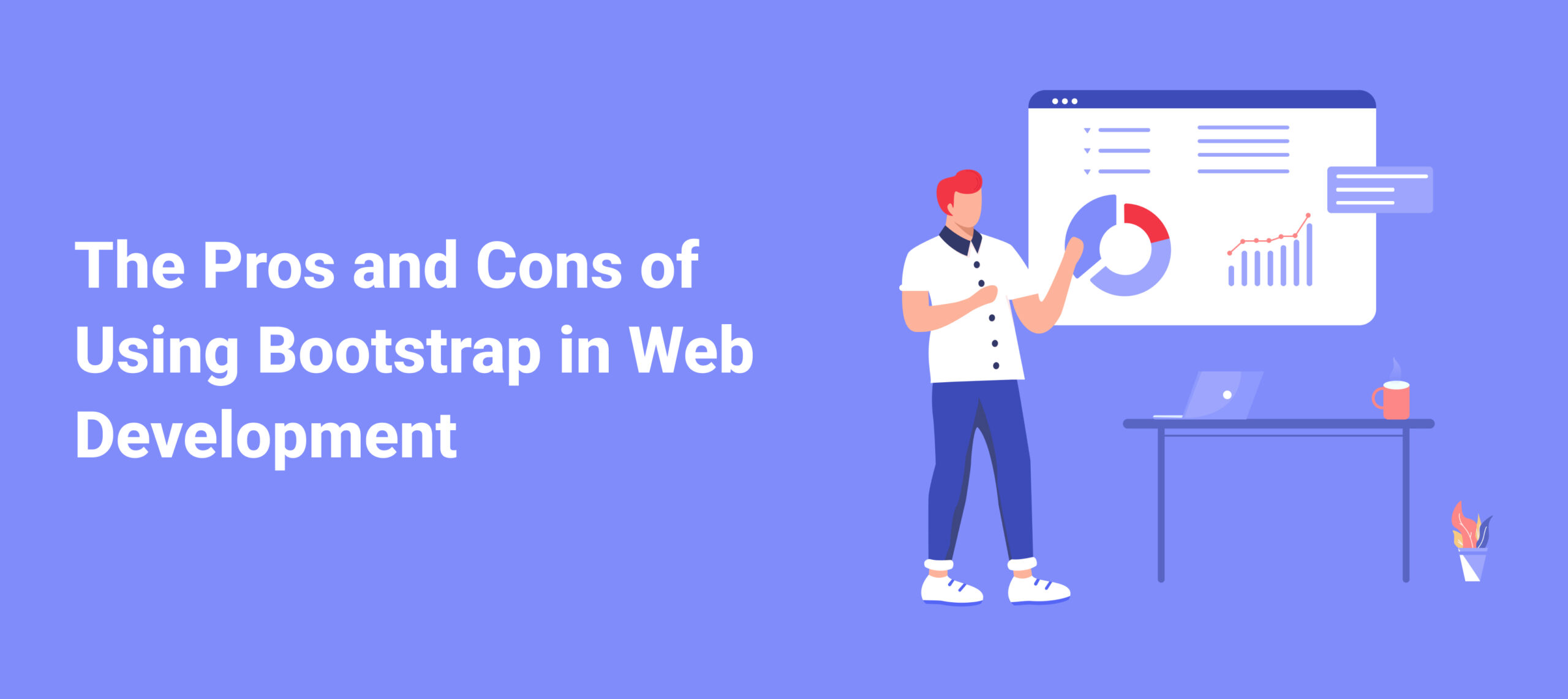Are you curious about the pros and cons of using Bootstrap in web development? Look no further!
Bootstrap has become a popular choice for web developers in recent years. It is an open-source framework developed by Twitter that allows developers to create responsive, mobile-first websites quickly and easily.
However, like any tool, Bootstrap has its advantages and disadvantages. In this blog post, we’ll take a closer look at the pros and cons of using Bootstrap in web development.
What is Bootstrap in Web Development?
Bootstrap is a front-end web development framework that includes pre-designed HTML, CSS, and JavaScript components. It was originally developed by a designer and a developer at Twitter to make it easier for developers to create consistent and responsive websites.
Bootstrap admin templates are known for their customizability and advanced features. Today, it is one of the most popular front-end frameworks, with a large community of developers contributing to its development.
Pros of Using Bootstrap
- Responsive design: Bootstrap’s responsive design means that websites built with it will automatically adjust to different screen sizes, making them mobile-friendly and accessible to a wider audience.
- Consistent design: Bootstrap’s pre-designed components and templates help ensure a consistent design across your website, saving you time and effort.
- Wide range of components: Bootstrap comes with a wide range of pre-designed components, including forms, buttons, navigation menus, and more. This makes it easy to add functionality to your website without having to build everything from scratch.
- Large community: With a large community of developers using and contributing to Bootstrap, you’ll find plenty of resources, tutorials, and support available online.
Cons of Using Bootstrap
- Learning curve: While Bootstrap can save time and effort in the long run, there is a learning curve involved in getting started with the framework. If you’re not already familiar with HTML, CSS, and JavaScript, it may take some time to get up to speed.
- Bloated code: Bootstrap’s pre-designed components and templates can result in bloated code that slows down your website’s load times. This can be mitigated by customizing your Bootstrap installation to only include the components you need.
- Lack of flexibility: While Bootstrap’s pre-designed components can be convenient, they can also limit your design options. If you have a specific vision for your website’s design, you may find yourself having to work around Bootstrap’s limitations.
- Overused design: Bootstrap’s popularity means that many websites look similar, which can make it difficult to stand out from the crowd.
Final Verdict
Bootstrap is a powerful tool for web developers, with many advantages that can save time and effort in the long run. However, it’s important to weigh these advantages against the potential drawbacks, such as a learning curve and lack of flexibility. Ultimately, whether or not to use Bootstrap will depend on your specific needs and preferences as a web developer.
